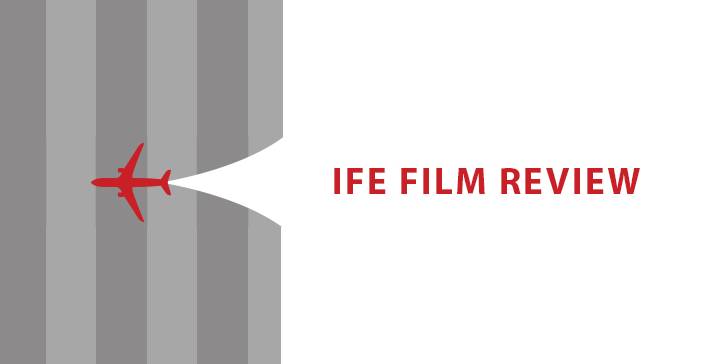 Most film historians agree that 1939 was a seminal year in Hollywood history with the one-two punch of Gone with the Wind and The Wizard of Oz alone, but on the international front, nothing holds a candle to 1959. Akira Kurosawa’s The Hidden Fortress was breaking box office records in Japan, Satyajit Ray’s neo-realist masterpiece The World of Apu debuted in India and the arrival of New Wave filmmakers like Jean Luc Goddard (Breathless), Alain Renais (Hiroshima, Mon Amour) and Francois Truffaut (The 400 Blows) heralded the birth of whole new kind of cool in France.
Most film historians agree that 1939 was a seminal year in Hollywood history with the one-two punch of Gone with the Wind and The Wizard of Oz alone, but on the international front, nothing holds a candle to 1959. Akira Kurosawa’s The Hidden Fortress was breaking box office records in Japan, Satyajit Ray’s neo-realist masterpiece The World of Apu debuted in India and the arrival of New Wave filmmakers like Jean Luc Goddard (Breathless), Alain Renais (Hiroshima, Mon Amour) and Francois Truffaut (The 400 Blows) heralded the birth of whole new kind of cool in France.
Personal, daring and above all else, boldy original, the films from the writers and directors of the French New Wave — most of whom began life as film critics for Andre Bazin’s groundbreaking Parisian film journal Cahiers du Cinema — embraced the conventions of the best of Hollywood genre filmmaking while also cleverly turning them on their ear.
In a phrase the French New Wave was a call to action, a revolution of form and content unlike anything the film world have seen before. And nowhere was the game-changing impact of “La Nouvelle Vague” on finer display that year than on the glittering shores of the French Rivera at the 12th Annual Cannes Film Festival.
Marcel Camus’ Black Orpheus may have taken home the coveted Palm d’Or, but the film that really jolted critics and cineastes upright and shook them to their core that year was Truffaut’s directorial debut, The 400 Blows.
Touching and often darkly funny, Blows is a coming-of-age tale about an adolescent boy, Antoine Doinel (beautifully played by then-newcomer Jean-Pierre Léaud) slowly slipping through the cracks at school and at home on his way towards a life of petty crime on the streets of Paris. Based on Truffaut’s own troubled childhood — like his filmic alter ego, Truffaut never knew his birth father, quit school early and had many brushes with the law in his youth — Blows burns brightest in its funnier, more whimsical moments following Doinel and his pals on their adventures in Paris.
Beautifully shot by acclaimed French cinematographer Henri Decaë — who cut his teeth on documentaries during WWII and later worked with New Wave masters like Claude Chabrol and Louise Malle — the street scenes here have a vivid, lived-in quality that is rare in films of the era. Gritty, raw, and real in the extreme, this isn’t the Paris we’re used to seeing onscreen. And though there are moments of staggering beauty to be found in the midst of it all, ultimately the way the children move through the crowds unnoticed and ignored by the adults around them only serves to slam home the films message that it’s a hard world for little things.
Yet despite the abuse and almost chronic indifference he suffers at home and in the classroom, Doinel remains unbroken and hopeful that something better is just around the corner. At once funny and sad, wounded and cocky, desperate and fearless, Doinel is, above all else, completely at home in his own skin. It’s easy to see why the pint-sized Léaud was carried from the theatre at Cannes to rousing cheers after the first screening, for his is truly one of the best juvenile performances ever committed to celluloid. If this kid doesn’t capture your heart and have you fishing around in your Le Premiere Class Givenchy amenity kit for a tissue by the third reel, you might not have a heart to begin with.
Truffaut went on to make three more films (and one hugely popular short film) continuing the saga of the unflappable Antoine Doinel, and fortunately, his life got a lot better and funnier over the years. That said, it is the dark, iconic finale of The 400 Blows that will truly haunt your dreams. Escaping from a strict, militaristic boarding school by the sea, Doinel takes off running. Following him through the trees towards a vast stretch of empty beach, the camera pans up to his face as he finally stops and stands alone in the crashing waves. Free for the first time in his young life, Doinel realizes that he has run out of land and there is literally nowhere else to run. Looking up, Doinel stares deeply into the camera as it freeze frames on his expressionless face and the film ends.
In the years since, we’ve seen freeze frames employed to great effect in commercials, TV and movies, but the impact of Truffaut’s stunning “freeze frame seen around the world” in 1959 cannot be understated. Breathtaking, ballsy and more than a little weird, this is the birth of modern indie film in one staggeringly cool shot. Seriously, it’s amazing.
Truffaut won the Directing Prize at Cannes that year and went on to direct such New Wave classics as Shoot the Piano Player, Jules and Jim, The Bride Wore Black, Day for Night (which won the Oscar for Best Foreign Film in 1973) and The Last Metro. And though fans tend to gravitate towards his sunny, mid-career romantic comedies, for sheer youthful audacity, The 400 Blows is textbook Truffaut.
Now playing on select Air France flights throughout the month of May, The 400 Blows is also available for streaming on Hulu and Amazon Prime.










